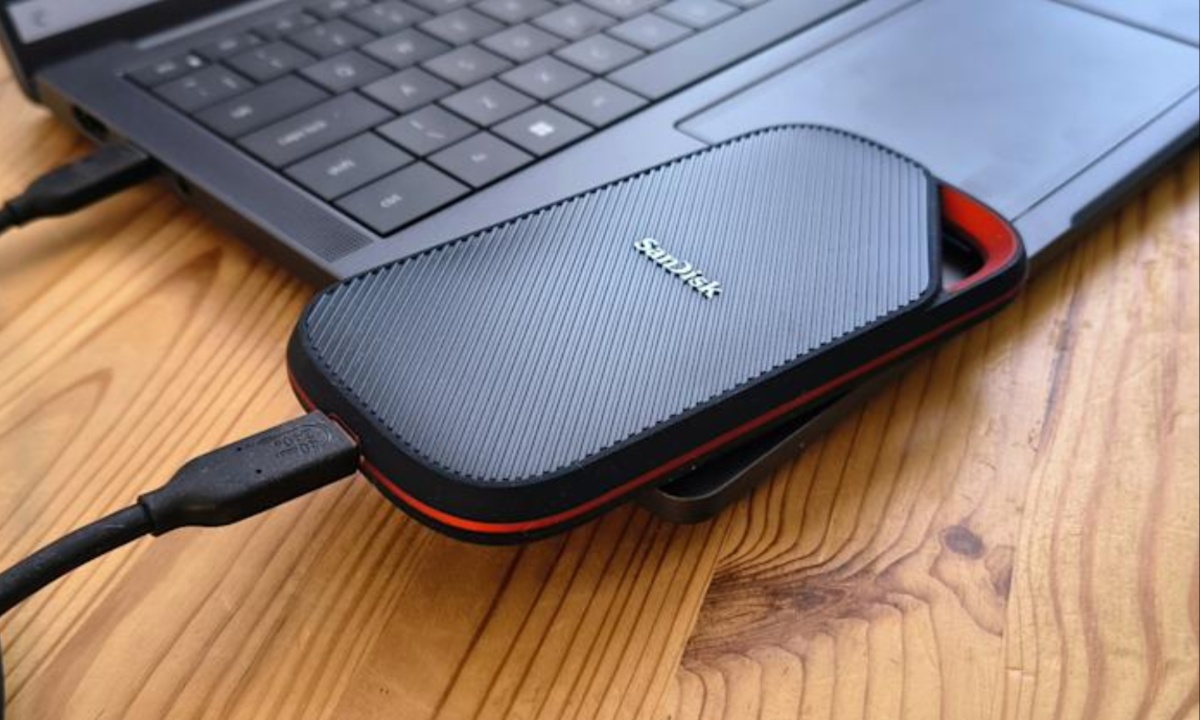The SanDisk Extreme Pro SSD with USB4 impresses with its solid and rugged design. Larger than previous models, it maintains the familiar Sandisk styling—dark gray with copper accents, a textured silicone exterior, and a generously sized lanyard loop. Its weight and robust feel give it a reassuring presence, ideal for users who value durability in portable drives.
High-Speed USB4 Support, Competitive Pricing, but Performance Issues Raise Concerns
This SSD supports the high-end USB4 protocol with a theoretical maximum bandwidth of 40 Gbps. While USB4 v2, which will support 80 Gbps, is still on the horizon, this model targets current top-tier speeds. It also comes with a five-year warranty, though this is conditioned on typical endurance measures like the total bytes written (TBW). It likely uses TLC NAND memory, inferred from its write performance behavior.

The drive is available in 2TB and 4TB capacities, priced at $280 and $430, respectively. These figures place it in the same range as similar USB4 drives like the Adata SE920 and OWC 1M2. While not a budget option, it’s competitively priced. DIY alternatives like the Ugreen CM642 are cheaper but involve extra effort. Overall, the drive’s cost is reasonable, but performance issues muddy its value.
Inconsistent USB4 Connectivity and Slower Speeds Limit Drive’s Real-World Performance
Despite its promise, the drive often failed to connect at full 40 Gbps speeds during testing, sometimes defaulting to 10 Gbps or even 5 Gbps. On some systems, including the Mac Studio, it performed correctly, but an inconsistency on a Thunderbolt 4-equipped test bed raised concerns. Even when it did connect at full speed, it lagged behind competitors in both synthetic and real-world tests.
CrystalDiskMark results showed decent sequential performance but significant weaknesses in single-queue/thread writing, the method used by Windows for most tasks. This led to performance that was sometimes worse than 20 Gbps drives. The 450GB write test also revealed middling results, with the drive being notably slower than other USB4 and even USB 3.2×2 drives.
The SanDisk Extreme Pro with USB4 is a good-looking, sturdy external SSD with a promising spec sheet. However, connection instability and subpar real-world speed diminish its appeal. Until SanDisk resolves these issues—potentially with a revised version—it’s hard to fully recommend this drive over more reliable and faster competitors in the same price range.




